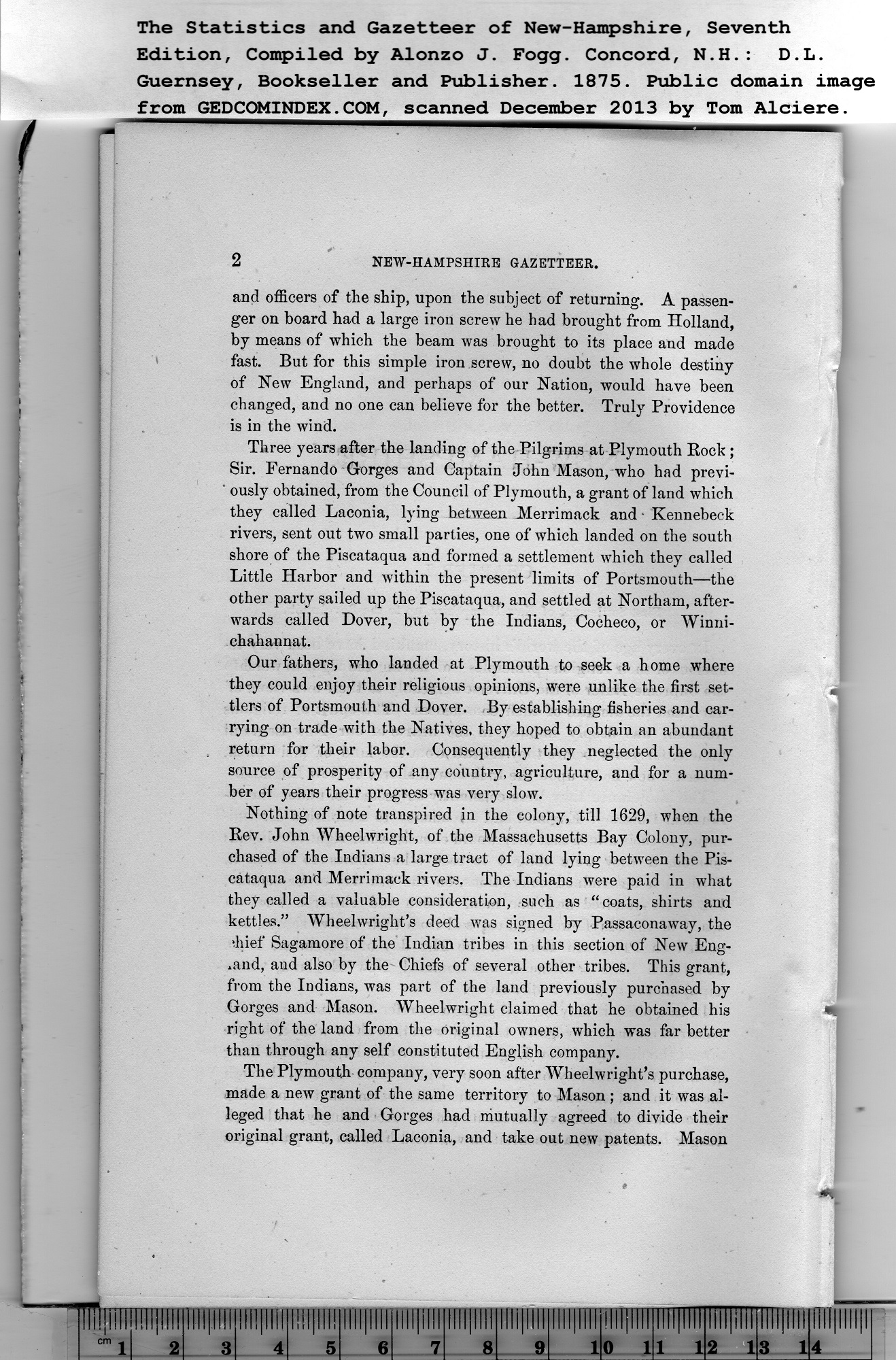|
2 NEW-HAMPSHIRE GAZETTEER.
and officers of the ship, upon the subject of returning. A passen-
ger on hoard had a large iron screw he had brought from Holland,
by means of which the beam was brought to its place and made
fast. But for this simple iron screw, no doubt the whole destiny
of New England, and perhaps of our Nation, would have been
changed, and no one can believe for the better. Truly Providence
is in the wind.
Three years after the landing of the Pilgrims at Plymouth Rock;
Sir. Fernando Gorges and Captain John Mason, who had previ-
ously obtained, from the Council of Plymouth, a grant of land which
they called Laconia, lying between Merrimack and Kennebeck
rivers, sent out two small parties, one of which landed on the south
shore of the Piscataqua and formed a settlement which they called
Little Harbor and within the present limits of Portsmouth—the
other party sailed up the Piscataqua, and settled at Northam, after-
wards called Dover, but by the Indians, Cocheco, or Winni-
chahannat.
Our fathers, who landed at Plymouth to seek a home where
they could enjoy their religious opinions, were unlike the first set-
tlers of Portsmouth and Dover. By establishing fisheries and car-
rying on trade with the Natives, they hoped to obtain an abundant
return for their labor. Consequently they neglected the only
source of prosperity of any country, agriculture, and for a num-
ber of years their progress was very slow.
Nothing of note transpired in the colony, till 1629, when the
Rev. John Wheelwright, of the Massachusetts Bay Colony, pur-
chased of the Indians a large tract of land lying between the Pis-
cataqua and Merrimack rivers. The Indians were paid in what
they called a valuable consideration, such as “coats, shirts and
kettles.” Wheelwright’s deed was signed by Passaconaway, the
chief Sagamore of the Indian tribes in this section of New Eng-
.and, and also by the Chiefs of several other tribes. This grant,
from the Indians, was part of the land previously purchased by
Gorges and Mason. Wheelwright claimed that he obtained his
right of the land from the original owners, which was far better
than through any self constituted English company.
The Plymouth company, very soon after Wheelwright’s purchase,
made a new grant of the same territory to Mason ; and it was al-
leged that he and Gorges had mutually agreed to divide their
original grant, called Laconia, and take out new patents. Mason
PREVIOUS PAGE ... NEXT PAGE
This page was written in HTML using a program written in Python 3.2
|
